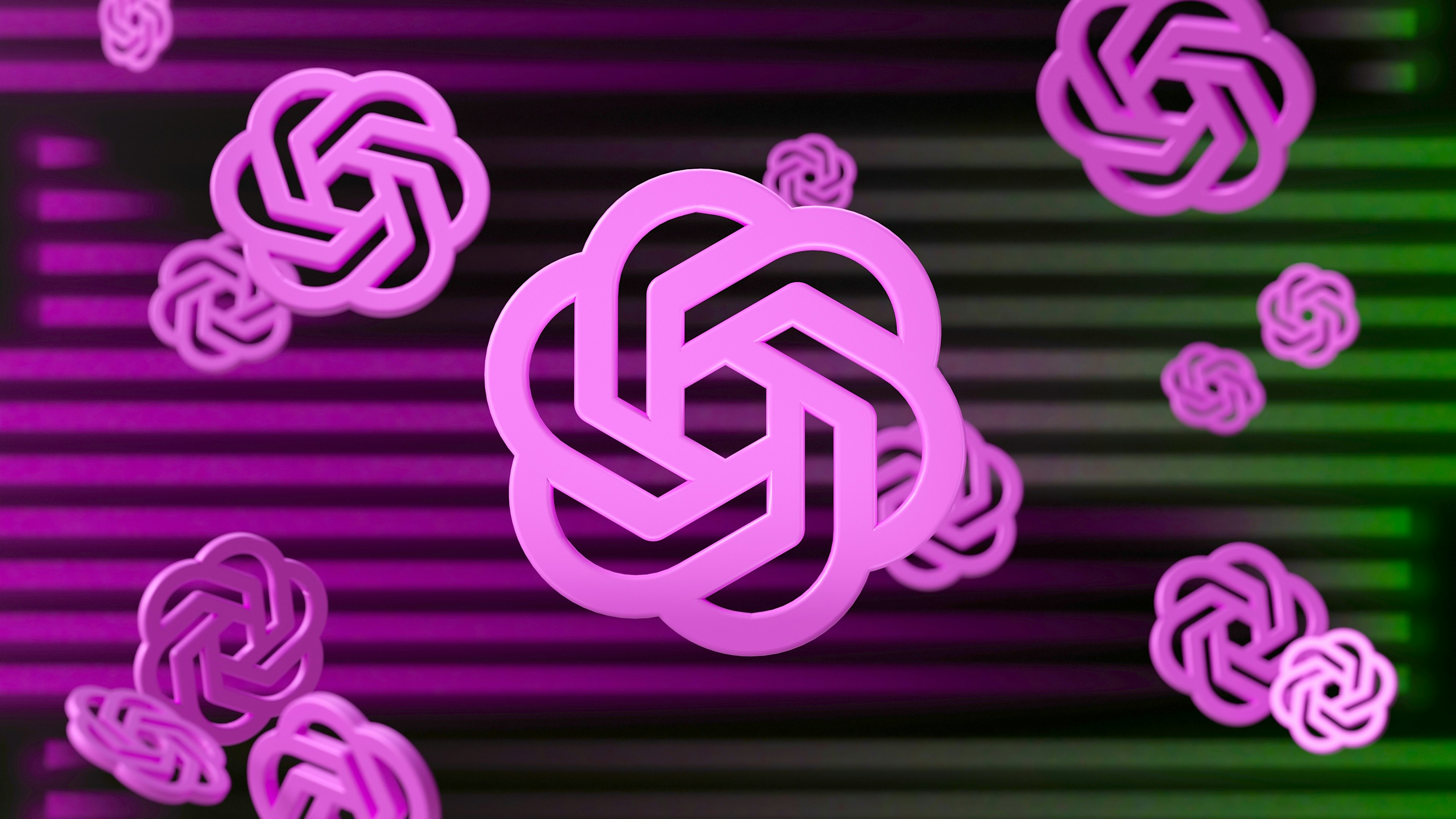< Back
ChatGPT Homework (How to Use ChatGPT to Get Your Homework Done Fast)
Declan Gessel
Aug 29, 2024
Many students today need help to keep up with the increasing school workload. In some cases, they can barely stay afloat. With today’s technology, there are ways to lighten the load and stay organized. One way to do this is with ChatGPT Homework, which can help students easily tackle assignments. Learning how to use ChatGPT for homework can involve asking it to explain difficult concepts, generate summaries of reading materials, or even suggest ideas for essays and projects. This guide will explain the benefits of using ChatGPT for homework and how to use it.
One great tool for helping students learn to use ChatGPT for homework is Jotbot’s AI writing assistant. This easy-to-use tool helps students write smarter, not harder.
Table Of Contents
What is ChatGPT?

ChatGPT is a large language model developed by OpenAI. It's designed to interact with users conversationally, providing information and completing tasks as instructed. It's a highly advanced chatbot that can generate human-quality text.
Who Created ChatGPT?
OpenAI, an artificial intelligence research company, created ChatGPT and launched the tool in November 2022. It was founded by entrepreneurs and researchers, including Elon Musk and Sam Altman, in 2015. OpenAI is backed by several investors, with Microsoft being the most notable. OpenAI also created Dall-E, an AI text-to-art generator.
How Does ChatGPT Work?
ChatGPT works through its Generative Pre-trained Transformer, which uses specialized algorithms to find patterns within data sequences. ChatGPT initially used the GPT-3 large language model, a neural network machine learning model, and the third generation of Generative Pre-trained Transformer. The transformer pulls from a significant amount of data to formulate a response.
ChatGPT is trained on a massive dataset of text and code. This allows it to understand and respond to various prompts and questions. When you provide a prompt, ChatGPT processes it, analyzes the context, and generates a relevant response. The model uses a complex neural network architecture to predict the most likely next word or phrase in a sequence, allowing it to create coherent and informative text.
The Main Features of ChatGPT
ChatGPT possesses a range of impressive features. For one, it can generate creative text formats, such as poems, code, scripts, musical pieces, emails, letters, etc. It can also provide summaries of factual topics or create stories. Finally, ChatGPT can translate languages, write creative content, and answer your questions informally.
Limitations of ChatGPT
While impressive, ChatGPT could be better. It may sometimes generate incorrect or misleading information and can be biased based on the data it was trained on.
Benefits of Using ChatGPT
ChatGPT can quickly generate text, saving time for writing essays or emails. It can provide explanations, answer questions, and help understand complex topics. It can generate ideas for writing projects or creative endeavors. It's available 24/7, providing a convenient resource for students and professionals. ChatGPT is often freely available, making it accessible to many users. Finally, it can be used for various tasks, from writing emails to generating code.
Related Reading
• Sharly AI
• ChatGPT PDF
• AI PDF Reader
• Hypotenuse AI
• ChatDoc
• PDF AI Summarizer
• Docsumo
• Document Summarizer
• Docalysis
How People Use ChatGPT for Homework

How ChatGPT Helps Students with Research Assignments
If you’re working on a research assignment, ChatGPT can help you tackle it in several ways. First, it can help you gather information on various topics, from historical events to scientific concepts. The AI can provide summaries, explanations, and potential sources for further research. Next, ChatGPT can help you verify the accuracy of information you find from other sources.
By comparing data from multiple sources and cross-referencing with ChatGPT's responses, you can ensure the reliability of your research. Finally, ChatGPT can assist in creating citations for sources used in research papers or essays. It can provide information on different citation styles (e.g., APA, MLA, Chicago) and generate accurate citations based on the provided details.
How ChatGPT Assists with Essay Writing
ChatGPT can be a valuable tool for students working on essays. It can help you brainstorm ideas and develop potential thesis statements for your paper. The AI can suggest different angles or perspectives on a topic, helping you find a unique approach. ChatGPT can also help you structure your essay by generating outlines or suggesting a logical flow of ideas.
This can be particularly helpful for students who struggle with organizing their thoughts. Finally, ChatGPT can assist in developing individual paragraphs by providing examples, evidence, or analysis to support the main point. It can also help you refine your writing style and improve sentence structure.
How ChatGPT Helps with Problem-Solving
For math or science problems, students can input the problem into ChatGPT and receive step-by-step solutions or explanations. The AI can help identify the correct approach and guide students through problem-solving. ChatGPT can also help students understand complex concepts by providing clear explanations or analogies.
This can be particularly useful for students struggling to grasp complex material. Finally, ChatGPT can help students identify errors in their problem-solving process. Students can identify mistakes and learn from them by comparing their work to AI solutions.
How ChatGPT Assists with Language Learning
ChatGPT can be a language tutor that provides conversation, grammar, and vocabulary practice. Students can ask questions, engage in dialogues, and receive feedback on their language skills. The AI can also help students identify and correct errors in their language use by analyzing their responses. Finally, AI can provide information about different cultures and customs, assisting students to understand the context of the language they are learning.
How ChatGPT Helps with Creative Writing
ChatGPT can help generate ideas, characters, or plotlines and develop a unique writing style for assignments requiring creative writing, such as short stories or poems.
Additionally, ChatGPT can help students develop complex and exciting characters by providing suggestions for their motivations, backstories, and personality traits. Finally, AI can assist in creating vivid and immersive settings for creative writing pieces. It can provide ideas for locations, atmosphere, and sensory details.
Start Writing for Free With Jotbot
Jotbot is your document assistant. Jotbot does AI note-taking, AI video summarizing, and AI citation/source finder; it writes AI outlines for essays and even writes entire essays with Jotbot’s AI essay writer. Join 500,000+ writers, students, teams, and researchers worldwide to write more, write better, and write faster with Jotbot's AI writing assistant.
Write more intelligently, not harder, with Jotbot's AI writing assistant. Start writing for free with Jotbot today — sign in with Google and get started in seconds.
Different Types of Homework and Approaches

Essay Writing: Break It Down with ChatGPT
Writing essays is a common task in school. Essays can help teachers assess how well students understand a particular subject and their writing skills. Essays also help students organize their thoughts and develop a coherent argument. When using ChatGPT for essay writing, consider these approaches:
Brainstorming Ideas
Provide ChatGPT with a topic and ask for potential ideas or angles to explore. This can help spark creativity and generate a unique perspective.
Outline Creation
Ask ChatGPT to create an outline for your essay, including the main points and supporting evidence. This can help you structure your thoughts and ensure a logical flow.
Paragraph Development
Provide ChatGPT with a topic sentence for a paragraph and ask it to generate supporting details or examples. This can help you expand on your ideas and create a well-developed argument.
Proofreading and Editing
Use ChatGPT to proofread your essay for grammar, spelling, and punctuation errors. It can also help identify areas where your writing could improve clarity, coherence, and style.
Research Papers: Tackle the Project with ChatGPT
Research papers are another dreaded classroom assignment. These long, in-depth papers require students to gather information on a topic, analyze it, and then present their findings in a structured way. Research papers often have specific guidelines and can be challenging to organize. ChatGPT can be a valuable tool for research papers. Here are some ways to use it effectively:
Information Gathering
Ask ChatGPT to provide summaries of relevant research articles or studies. This can help you identify key findings and potential sources for your paper.
Citation Generation
Use ChatGPT to generate citations for your sources, ensuring accuracy and consistency in your formatting.
Fact-Checking
Verify the information provided by ChatGPT with other reliable sources to ensure its accuracy.
Thesis Statement Refinement
Ask ChatGPT to help refine your thesis statement, making it more specific and focused.
Argument Development
Use ChatGPT to help you develop your arguments and counterarguments, ensuring a solid and well-supported thesis.
Problem-Solving: Get Help with Math and Science Assignments
Many students struggle with math and science. These subjects often require memorizing terms and applying concepts to solve problems. When using ChatGPT for problem-solving, consider these approaches:
Step-by-Step Solutions
Provide ChatGPT with a problem and ask it to show you the steps to solve it. This can help you understand the process and identify any errors in your work.
Concept Explanation
Ask ChatGPT to explain a concept or principle related to the problem. This can help you better understand and apply the underlying theory to the problem.
Error Identification
If you're having trouble solving a problem, ask ChatGPT to identify any errors in your work. This can help you pinpoint where you're going wrong and correct your mistakes.
Alternative Approaches
Ask ChatGPT to suggest alternative approaches to solving a problem. This can help you explore different strategies and find the most effective solution.
Real-World Applications
Ask ChatGPT for real-world examples of how the problem or concept is applied in practice. This can help you understand the topic's relevance and importance.
Language Learning: Practice with ChatGPT to Get Better
ChatGPT can be a helpful tool for language learners. Here are some ways to use it:
Conversation Practice
Engage in conversations with ChatGPT to practice your speaking and listening skills. The AI can respond and correct any errors in your language use.
Grammar and Vocabulary
Ask ChatGPT to explain grammar rules or provide examples of vocabulary words. This can help you improve your language proficiency.
Cultural Insights
Ask ChatGPT about cultural differences or customs related to your learning language. This can help you better understand the context and nuances of the language.
Translation Assistance
Use ChatGPT to translate sentences or phrases into the language you're learning. This can help you expand your vocabulary and improve your language understanding.
Pronunciation Practice
Ask ChatGPT to pronounce words or sentences, helping you improve your pronunciation and accent.
Creative Writing: Use ChatGPT to Get Inspired
ChatGPT can be a source of inspiration for creative writing. Here are some ways to use it:
Idea Generation
Ask ChatGPT to generate ideas for characters, settings, or plotlines. This can help you spark your creativity and develop unique stories.
Character Development
Use ChatGPT to build your characters by asking them questions about their motivations, backstories, and personalities.
Setting Creation
Ask ChatGPT to describe a setting for your story, including details about the location, atmosphere, and sensory experiences.
Dialogue Writing
Use ChatGPT to help you write realistic and engaging dialogue for your characters.
Plot Development
Ask ChatGPT to suggest plot twists or unexpected events to add interest to your story.
Remember to use ChatGPT to enhance your learning, not as a replacement for your critical thinking and analysis. Always verify the information provided by ChatGPT with reliable sources and use it ethically and responsibly.
11 Best Practices for Using ChatGPT in Academics

1. Write Clear Instructions to Get the Best Results
To get the most accurate and relevant responses from ChatGPT, be as specific and detailed as possible in your prompts. The more information you provide, the better the AI can understand your request and tailor its output accordingly. For example, instead of asking, "Write an essay on climate change," you could ask, "Write a persuasive essay arguing that climate change is primarily caused by human activities, citing specific scientific evidence to support my claims."
2. Always Double-Check The Information ChatGPT Provides
While ChatGPT is a powerful tool, verifying the information it provides with reliable sources is essential. Always cross-reference its responses with other reputable sources to ensure accuracy. This is especially important for topics that require factual information, such as historical events, scientific concepts, or current affairs.
3. Avoid Plagiarism When Using ChatGPT
When using ChatGPT to generate text, be careful to avoid plagiarism. If you use any of its output in your work, cite it properly. This includes paraphrasing, summarizing, or directly quoting the AI's responses. Using ChatGPT without proper attribution can be considered academic dishonesty.
4. Use ChatGPT as a Tool, Not a Replacement
ChatGPT can be a valuable tool for learning and research, but it should not be used as a substitute for critical thinking and analysis. Always use your judgment and evaluate the information provided by ChatGPT. Rely on your knowledge and understanding to ensure the quality and relevance of your work.
5. Experiment and Iterate to Get Better Results
Feel free to experiment with different prompts and approaches when using ChatGPT. The more you use it, the better you'll get the most out of it. Try different wordings, provide more or less context, and see how these changes affect the AI's responses. This iterative process can help you refine your prompts and achieve better results.
6. Be Mindful of Bias in AI Responses
ChatGPT is trained on a massive dataset of text and code, which may contain biases. Be aware of these biases and consider them when evaluating the AI's responses. For example, if you're asking ChatGPT to generate text on a controversial topic, be aware that the AI may reflect biases in the data it was trained on.
7. Stay Informed About AI Developments
Keep up-to-date with the latest developments in AI and its applications. This will help you understand the capabilities and limitations of ChatGPT and use it effectively. Stay informed about new features, updates, and research related to AI language models. This knowledge can help you leverage ChatGPT's potential and avoid common pitfalls.
8. Consider the Ethical Implications of Using AI for Academics
Be mindful of the ethical implications of using AI for academic purposes. Avoid using ChatGPT to cheat or undermine the learning process. Use it to enhance your learning, not as a shortcut to avoid doing the work yourself.
9. Seek Guidance from Your Instructors
If you need help using ChatGPT effectively, feel free to seek guidance from your teachers or academic advisors. They can provide valuable insights and support. They may also have specific recommendations for using ChatGPT in your coursework.
10. Use ChatGPT Responsibly
Use ChatGPT responsibly and ethically. Avoid using it to spread misinformation or harm others. Be mindful of the potential consequences of using AI for malicious purposes.
11. Prioritize Your Learning
While ChatGPT can be a helpful tool, it's essential to prioritize your learning and development. Don't rely solely on AI to do your work for you. Use ChatGPT to supplement your efforts and ensure you understand the concepts and information you're learning.
Jotbot vs. ChatGPT- Which is Better For Academics?

What Exactly is Jotbot?
Jotbot is an AI-powered personal document assistant that makes writing tasks easier. Instead of just generating text, like ChatGPT, it offers a comprehensive suite of tools designed to improve productivity and efficiency.
5 Benefits of Using Jotbot
1. AI Note-Taking: Automatic Transcription for Fast-Paced Environments
Jotbot can automatically transcribe notes from meetings, interviews, and lectures. This feature saves time and effort by allowing you to focus on listening instead of frantically trying to keep up. This is especially useful for students tackling fast-paced lectures and professionals who must capture critical information from meetings.
2. AI Video Summarizing: Reviewing Key Points Made Easy
Jotbot can summarize key points from long videos to make reviewing and understanding complex information easier. This tool is valuable for students watching lengthy lectures or industry professionals needing to stay current on trends.
3. AI Citation/Source Finder: Accurate References Made Simple
Jotbot can help you find relevant sources and generate accurate citations to ensure your work is
appropriately referenced. This feature can save you time and effort, especially when working on research papers or academic projects.
4. AI Outlines for Essays: Structuring Your Writing
Jotbot can create outlines for your essays, providing a structured framework for your writing. This can be helpful for students who struggle with organizing their thoughts or professionals who need to write clear and concise reports.
5. AI Essay Writer: Generating Ideas and Paragraphs
While Jotbot can't write entire essays from scratch, it can assist you by generating ideas, paragraphs, or even sections. This can be helpful for students needing help to come up with ideas or for professionals who need to write quickly and efficiently.
Jotbot vs ChatGPT: What Are the Key Differences?
While both ChatGPT and Jotbot are AI-powered tools, they have different strengths and weaknesses:
Focus: A Broader Range of Features
ChatGPT is primarily designed for generating text, while Jotbot offers a broader range of features, including note-taking, summarization, and citation management. This means that Jotbot is better suited for tasks requiring more than text generation.
Depth of Understanding: Jotbot Excels at Research
Due to its focus on note-taking and research, Jotbot may have a deeper understanding of specific topics. This is because Jotbot can process and analyze large amounts of information, which helps it provide more accurate and informative responses.
Customization: Tailor the Features to Your Needs
Jotbot may offer more customization options for users, allowing you to tailor its features to your specific needs. This can be helpful for students and professionals who have unique requirements or preferences.
Integration: Smoothly Connect with Other Productivity Tools
Jotbot may integrate smoothly with other productivity tools, making it easier to use in your workflow. This can help you streamline your tasks and improve your overall efficiency.
Related Reading
• Best PDF Summarizer
• Can You Upload Files to ChatGPT
• Upload PDF to ChatGPT
• Zotero GPT
• Paper Summary AI
• Ask Your PDF ChatGPT Plugin
• Can AI Summarize an Article
• AI That Reads PDF and Answers Questions
• ChatGPT File Uploader
• Chat with Documents
• ChatGPT Summarize Long Text
Frequently Asked Questions About ChatGPT Homework

Is it cheating to use ChatGPT for homework?
Using ChatGPT to generate text for homework raises ethical concerns. But is it cheating? Not necessarily. The key is to use it responsibly and ethically. Avoid using it to plagiarize or to avoid doing your work. Instead, consider using ChatGPT to help you learn and improve your writing skills.
Can ChatGPT replace human teachers?
No, ChatGPT cannot replace human teachers. While it can provide information and assistance, it cannot offer the personalized guidance, feedback, and emotional support that a human teacher can. ChatGPT is a valuable tool but should be used with traditional teaching methods.
How can I avoid plagiarism when using ChatGPT?
Plagiarism is a serious academic offense. To avoid it when using ChatGPT for homework, cite any information you obtain from the AI. This includes paraphrasing, summarizing, or directly quoting ChatGPT's responses. You should also use your critical thinking and analysis to ensure that your information is accurate and relevant. Additionally, avoid copying and pasting ChatGPT's output verbatim into your work.
Write Smarter With AI Writing Assistant — Start Writing for Free Today
Jotbot is your document assistant. Jotbot does AI note-taking, AI video summarizing, AI citation/source finder, writes AI outlines for essays, and even writes entire essays with Jotbot’s AI essay writer. Join 500,000+ writers, students, teams, and researchers worldwide to write more, write better, and write faster with Jotbot's AI writing assistant.
Related Reading
• How to Upload Files to ChatGPT-4
• DocLime
• PDF.ai Chrome Extension
• Claude PDF
• AI to Extract Data from PDF
• AI PDF vs AskYourPDF
• ChatDoc vs ChatPDF
• ChatPDF Alternatives
• HiPDF
• Student GPT
• How to Use ChatGPT for School
• ChatGPT Homework Help
Write more, better, faster.
Your personal AI document assistant












